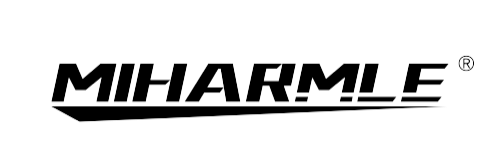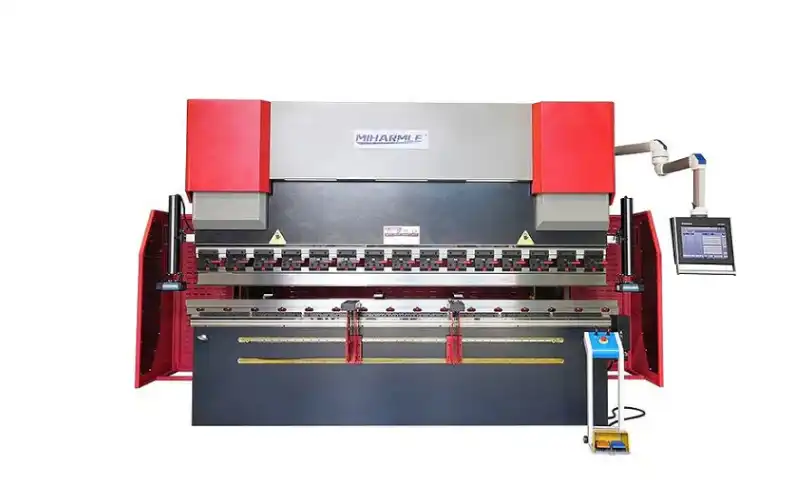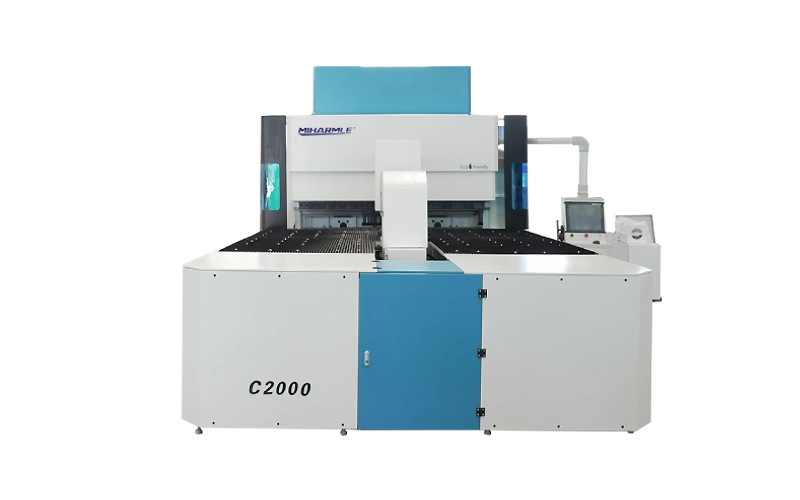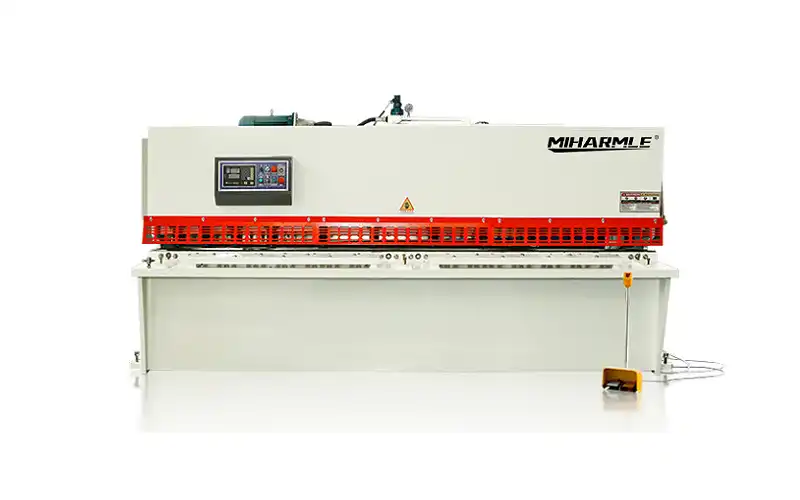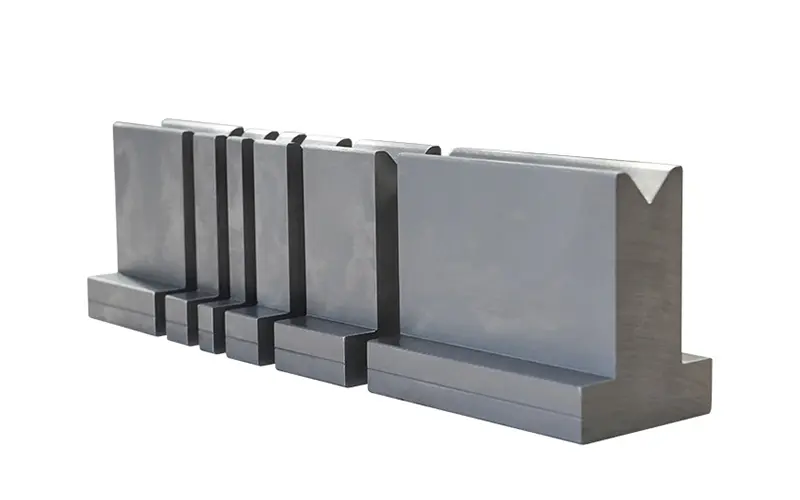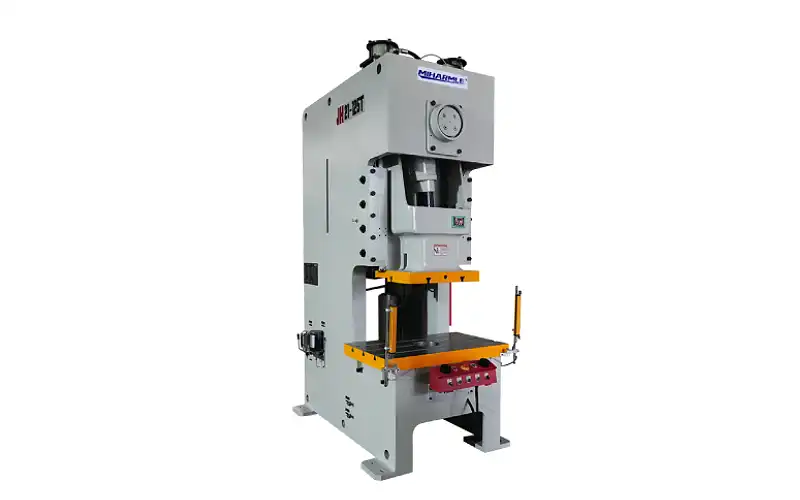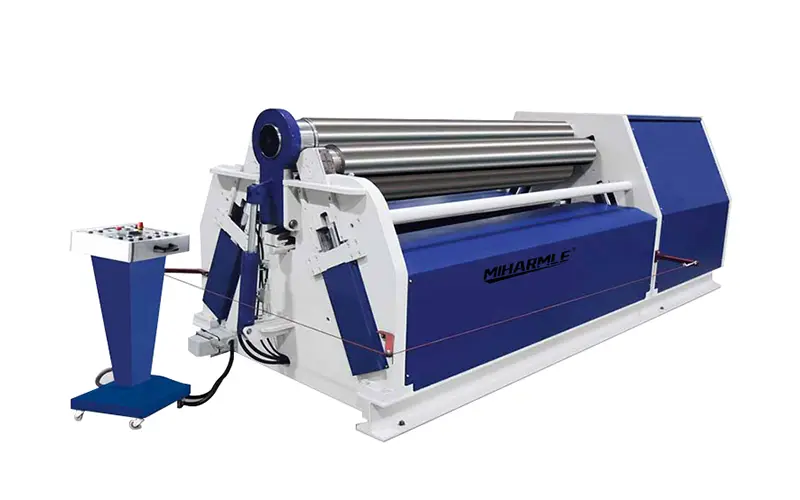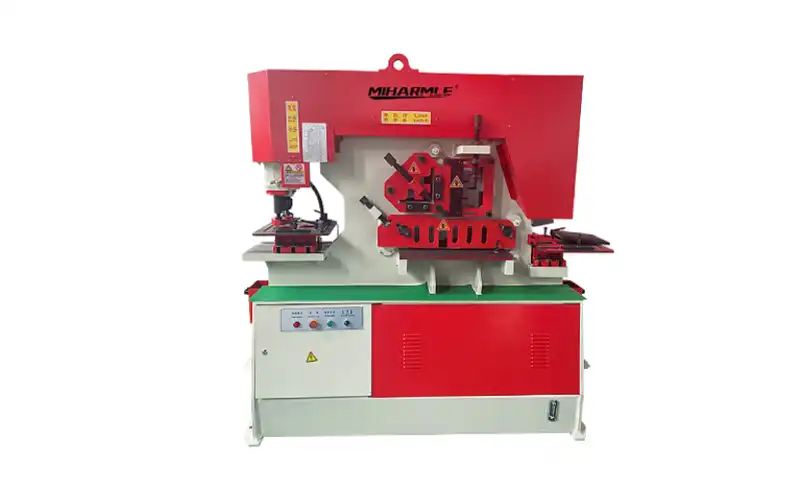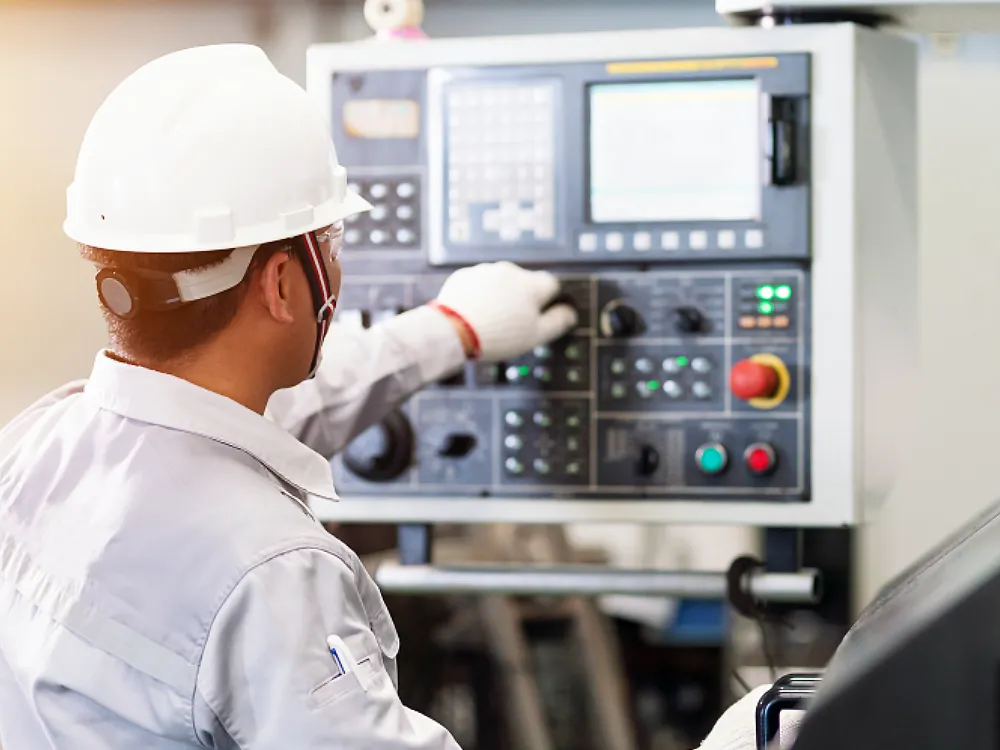
CNC machines have brought a massive transformation in manufacturing processes. Every small to large manufacturing company is adopting CNC machines. Each CNC machine consists of a CNC system, which is the key component. But the question is: how many types of control systems are there for CNC machines?
It is noteworthy that there are multiple types of CNC control systems. Each of those types serves in its unique way. Understanding these types is paramount if you are looking to choose any specific CNC machine. If you don’t know anything about them, don’t worry! This guide will give you all the info about those systems.
What is A CNC system?
The CNC system controls the functionality of the machines through computerized programs. It has many other components that work in harmony. These include control units, input devices, CNC programs, feedback systems, etc. All these components are integral to the CNC system.
Different types of CNC machines are available. Examples include milling machines, lathe machines, CNC press brakes, etc. All of these machines are dependent on the CNC system. This system takes instruction in the coded form. After processing, this CNC system gives you the required output.
First, the Computer-aided design is made according to the required shape of the part. This design is converted into specialized G-code using CAM (Computer-Aided Manufacturing) software. These coded instructions are fed to the control unit of the CNC machines.
The CNC system processes the instructions and gives us output. No matter how complex the shape you need, the CNC system always gives 100% precision. In the past, this CNC system was considered unreliable.
However, with time, CNC technology has improved a lot. An operator can quickly get ideal accuracy and precision from these machines. What makes the CNC stand out is its ability to offer quick turnaround. You’ll be able to create complex shapes in minutes.
Types of CNC Control Systems
There are many types of CNC control systems. Each of them is unique in its work. However, they all offer excellent ways of automating the machines. Here is a list of some popular types of CNC systems:
- Loop Control CNC System
- Motion Control CNC Controllers
- Axis Type CNC Controllers
Notably, each of these main types has further subdivisions and parts. Let’s explore each of these types in more detail.
1- Loop Control CNC System
The loop control CNC system has been around for years. Initially, these machines used to come with many errors. The reason is that the technology was not that updated. Now, two main types of CNC systems are available in the market. Here are their names:
- Open-Loop Control CNC Machines
- Closed-Loop Control CNC Machines
Keep in mind that the machines that consist of these two CNC systems behave differently. Above all, these two CNC systems differ in accuracy, precision, and pricing. The machines with open loop controller systems are less expensive and inaccurate, and vice versa. Let’s dive deeper and discuss both of these systems and their operations.
Open-Loop Control CNC Machines
Open loop CNC systems are old technology and less expensive. The CNC machine using this system offers inaccurate designs as an output. The reason is that they don’t have any feedback mechanisms. In simple words, this system does not have automated supervision.
Let’s discuss the mechanisms in a more straightforward way. First, the CAD (design) is sent to the CAM software. This software changes the design into the coded instruction (in G-code form). These codes are fed to CNC machines. Now, the machines start to process.
The machine has an open-loop CNC system, so it won’t have any feedback or correction system. It will try to follow the coded instructions. However, due to external factors, there would be slight deviations from machines. The machine will not follow the exact coded instructions. Due to these minor deviations, the machine won’t give 100% precision.
Although this deviation can be slight, it matters when you need 100% precision. The open loop system has no built-in feature to supervise machine accuracy. Instead, a human will have to check the machine’s performance.
Closed-Loop CNC System
The closed-loop CNC system is more advanced. It offers excellent precision as this system consists of a feedback mechanism. The machines’ performance is supervised. The performance data is sent to the control unit. If there is any issue in performance, the control unit adjusts accordingly.
Like a normal CNC machine, the instructions are fed to the machine in coded form. The CNC machine starts to work. If machines do not follow the instructions and give output accordingly, then there will be issues with accuracy. To fix this issue, this system has a feedback or correction system.
The feedback mechanism of the closed-loop CNC system sends a performance report to the control unit. If the machine does not follow the instructions accurately, the control unit adjusts rapidly. This adjustment from the control unit ensures that machines give 100% precision out. The action from the control unit is immediate.
In simple words, the closed-loop system has a feedback machine. This feedback feature checks the machine’s working and sends data to the control unit. However, the open loop system does not have such features. So, machines with closed-loop CNC systems are costly. However, their ideal precision is worth every single penny.
2- Motion Control CNC Controllers
This CNC system is the central brain when you need to control the motion of machines’ components. As you know, each CNC machine consists of different parts. For example, milling machines have spindles, tools, worktables, etc. The tools move and cut the workpiece.
This system ensures that the movement of those tools is 100% precise. The design in the G-code form is fed to the machine. Now, it is essential that the cutting moves as per the coded instructions. If those tools fail to move accurately, it will lead to inaccurate cutting. In such conditions, these motion control CNC controllers come in handy.
The motion controller CNC system has a feedback mechanism that informs the controller about movement accuracy. If tools are not moving accurately, the controller adjusts accordingly. These adjustments ensure that tool movement is corrected as per the instruction provided.
Quick Info: This motion control system also controls the movement of tools in different axes. This system will ensure accuracy if you need cutting at the X, Y, or Z axis. This is due to the presence of feedback mechanisms. Due to automation, the chances of errors are zero.
3- Axis Type CNC Controllers
This CNC control system ensures accurate movement of cutting tools on different axes. Keep in mind that CNC machines can work on complex workpieces. They can give very complex shapes with ease. Those complex shapes require cutting tools to move in multiple axes.
The axis-type CNC controller checks and ensures that tools move on the right axis. Remember, machines with multiple-axis movements are available. Most common CNC machines usually have X, Y, and Z axes for cutting. However, for complex work such as sculpting, more axes are required. Here is a list of different axis controllers:
- 2-Axis CNC Controllers
- 3-Axis CNC Controllers
- 4-Axis CNC Controllers
- 5-Axis CNC Controllers
Axis Controllers with Different Axes
As I said, the axis controllers ensure accurate movement of different axes. Each works in a particular way. Let’s explore those axis controllers in more detail and their various directions.
- A 2-axis CNC controller allows machine tools to move in only two axes, X and Y. The cutting tools in these machines won’t go into Z axes. Examples of such machines are lathes and laser cutters.
- The 3-axis CNC controller allows the tools to move three-directionally. These directions are along the X, Y, and Z axis. These three-axis CNC machines are the most common. Examples include CNC milling machines and CNC routers.
- The 4-axis CNC machine has directional movement. Apart from the X, Y, and Z axes, these machines allow one additional rotational movement around the X axis. Such machines are helpful when complex shapes and geometries are required.
- The 5-axis CNC controller allows five directional movements. The X, Y, and Z axes are common. Two additional axes, the X and Y axes, allow tools to rotate around. The machines are very complex and used at higher industrial scales.
Keep in mind that some CNC machines can also have six directional movements. The CNC axis controller is used in all of these types. This CNC system ensures that cutting tools move in the correct axis and direction. If cutting makes a mistake, the feedback machine informs the controller. So, it immediately adjusts to ensure that accuracy.
Why Opt For CNC Control Machines?
The CNC machines offer ideal precision that you won’t get with manual ones. It provides excellent repeatability and quick turnaround. The work that can take days with manual machines can be completed with CNC machines in minutes. The chances of errors are negligible. Therefore, you should prefer it.
It is a fact that errors and mistakes are expected when you use manual machines. There will be some offs due to operator mistakes or external factors. However, the CNC control machines remove even the slightest chance of errors.
The feedback system immediately understands the issue if the machine makes any mistake. The control unit then adjusts and ensures that machines work with precision. No matter how many parts you need, CNC machines have no issues. You can make as many parts as you need.
The precision of these machines won’t be affected even if you use them all day. The speed of these machines is exceptional. Above all, you won’t have to hire more laborers to supervise the machines. Any error will be detected automatically as it consists of a feedback mechanism.
So you won’t have to manage high labor costs. Only one operator is enough for CNC machines. In manual machines, you typically need more human resources for supervision. Due to all these features, you should prefer CNC machines.
Frequently Asked Questions
Q1: What is an open-loop control system?
The open-loop control system does not contain any feedback mechanism. It is prone to mistakes and inaccurate component manufacturing. However, CNC machines using this system are inexpensive.
Q2: Can CNC machines switch between open-loop and closed-loop control?
Yes, some modern CNC machines allow you to switch between two systems. However, these machines are very costly. Therefore, you should consider a closed-loop system in your machine. It will give you excellent precision.
Q3: What is adaptive control in CNC machines?
Adaptive control or closed-loop control systems are the same. They consist of a feedback mechanism or error detector. If a machine makes any mistake, the feedback mechanism detects it. The controller then adjusts to remove the error. This is a real-time adjustment to save your parts from inaccuracy.
Q4: When should I buy CNC machines?
If you’re a professional and need precision quickly, consider CNC machines. However, these machines require a handsome budget. You can go with manual machines if you operate at a lower scale. They are inexpensive and require human supervision.
Conclusion
Undoubtedly, the CNC system has transformed the manufacturing process. The efficiency of the manufacturer has gone up. Every small to large-scale manufacturer is adopting this newer technology. However, CNC systems have some types that work their way.
Understanding those types is paramount for successful machine use. Even if you’re looking to buy a CNC machine, knowing how the CNC system works is also a must. This guide covers everything related to types of CNC control systems.
